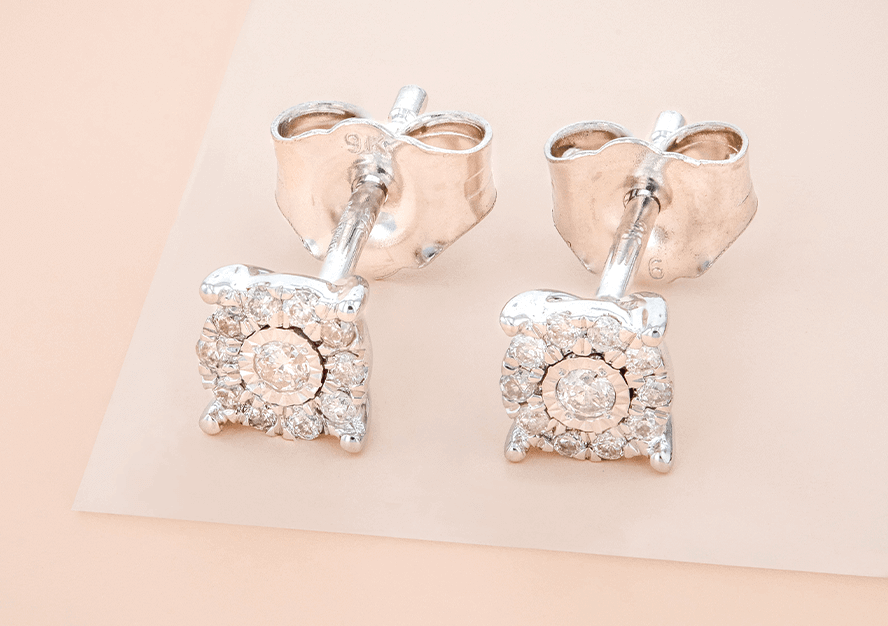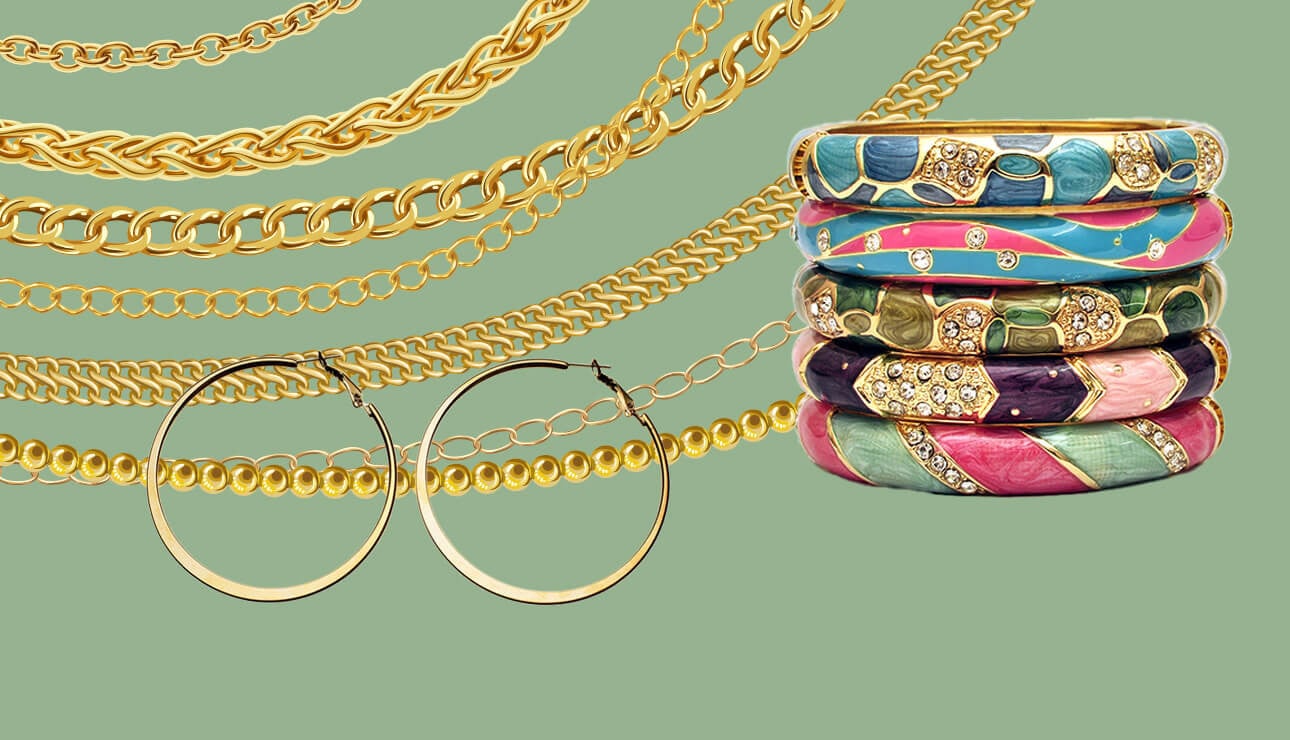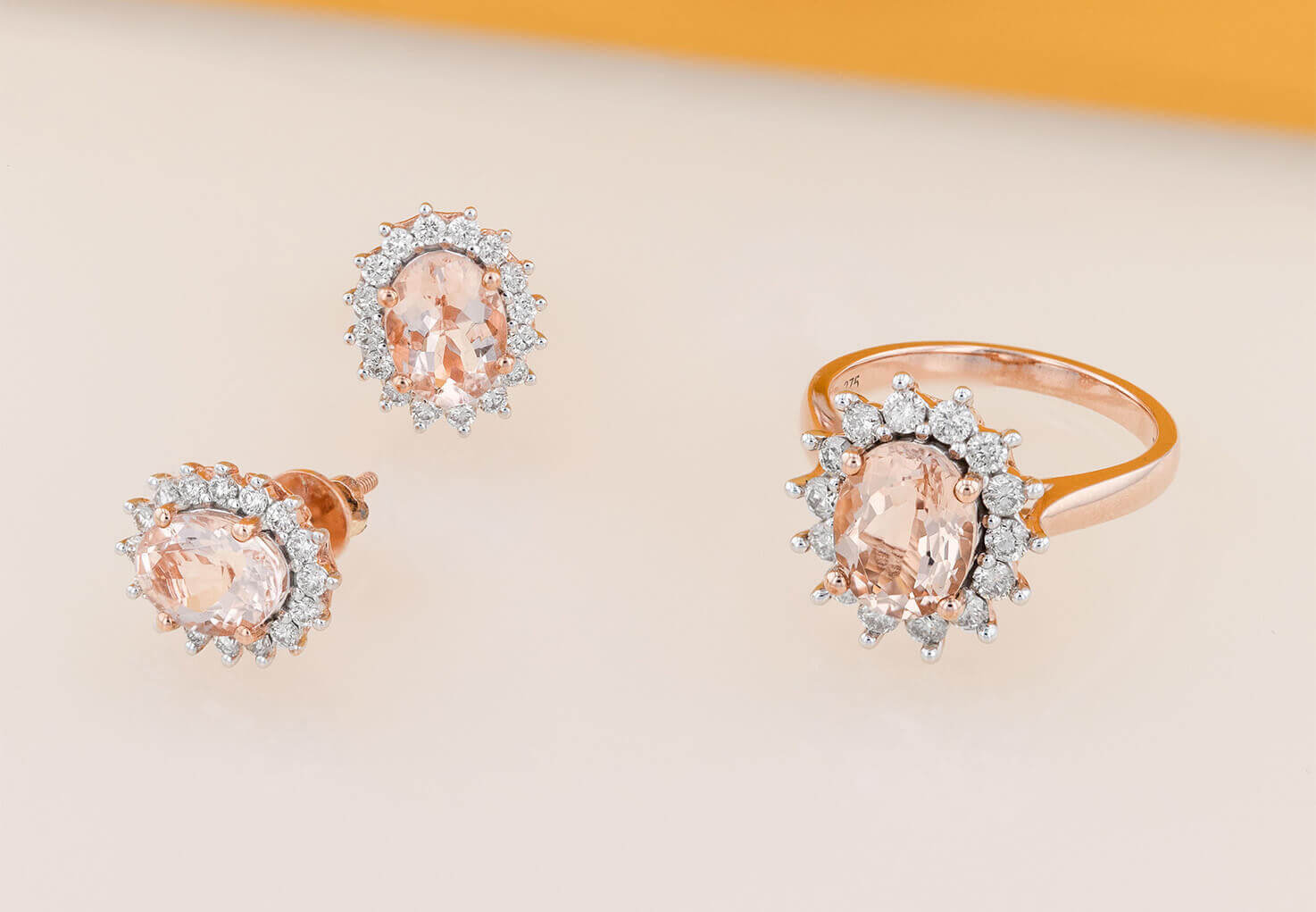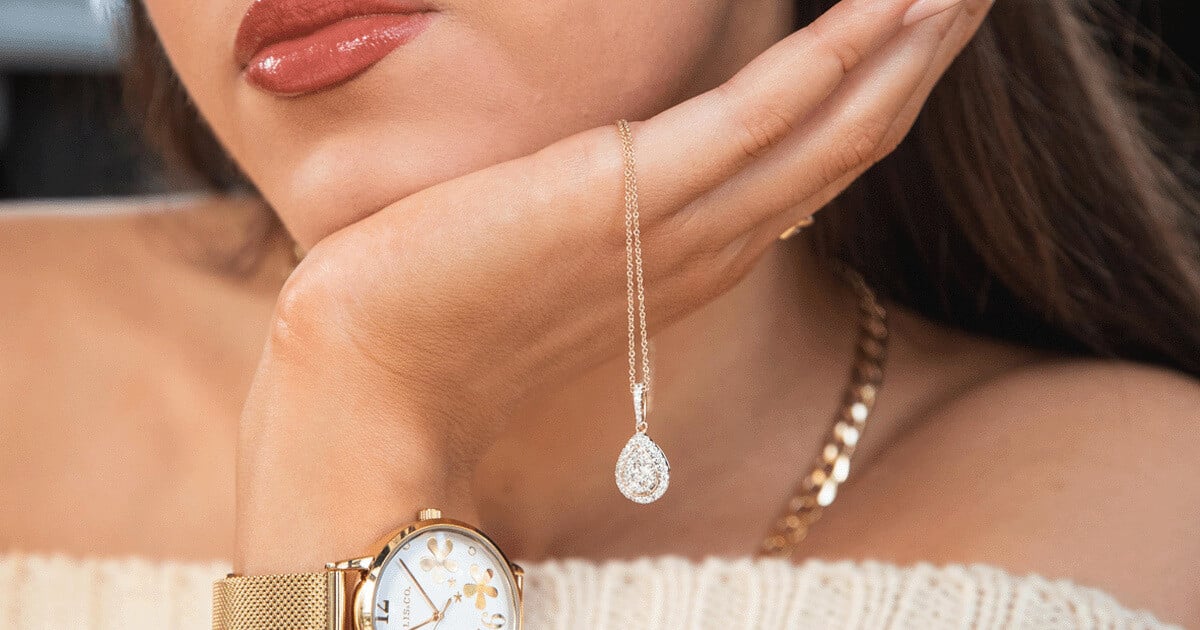Have you ever bought an adorable pair of earrings, only to be forced to take them out a couple of days later due to allergies? You just want to rock your favourite designs without worrying about the redness, itchiness and pain that comes with many costume jewellery. There are many different reasons why your jewellery may cause adverse reactions, which we will explore throughout this blog.
The term “hypoallergenic” is a buzzword that is often used in marketing to make products sound safe to wear. However, it does not have an official scientific meaning. When using the term ‘hypoallergenic’ most companies are referring to metals that are least likely to cause a reaction. By choosing particular metals and materials you can avoid running into trouble with your earrings. So do not worry! At Grahams, we have a range of options that you can choose from, there is no need to sacrifice style for allergies.
Read on to discover what metal allergies are, what they look like, and of course, how to wear earrings with sensitive earrings.
How to Wear Earrings with Sensitive Ears
Whether you have a metal allergy, skin sensitivities or your ears are just a bit more on the delicate side, having sensitive ears can be very frustrating. Not only does having sensitive ears often mean you have to avoid certain accessories, but it also means you may have to worry about experiencing some discomfort the next time you invest in a new pair of earrings and go to wear them for the first time. Fortunately, there are ways to combat this issue that don’t involve forgoing your favourite pair of earrings.
So, without further ado, here’s how to wear earrings with sensitive ears.
Apply Vaseline or Clear Nail Polish to the Earring
If you suffer from an allergy or sensitive ears the easiest way to combat a reaction when wearing certain pairs of earrings is to create a barrier between you and the earring. Much like how we wear sunscreen to block the sun from coming into contact with the skin, you can also use certain substances to avoid metals that aggravate your ears from having direct contact with them. Simply add a few coats of vaseline or petroleum jelly to the earrings in question before you put them on. Either substance will not only serve as an effective barrier but is also a proactive solution for dealing with a reaction. Alternatively, apply a few coats of clear nail polish to the base of the earring, ensuring that the varnish has dried before you put your earrings in.
This budget-friendly and safe style hack has been lauded by accessories fans for decades and ensures that those beautiful drop earrings on your favourite non-hypoallergenic studs do not go to waste. Best of all, it is likely that you already have one or both of these products sitting in a drawer somewhere at home and so it is more than likely you won’t be rushing out to get some before your next function.
Opt for an Ear Cuff Instead
Another way to wear earrings with sensitive ears is to opt for a pair of ear cuffs or clip-on earrings. Ear cuffs or clip-on earrings are designed for people who do not have multiple if not, any piercings. So, by default, they are suited for all different ear types, including those with particularly sensitive ears. From colourful stone-set pieces and edgy climbers to dainty huggie styles and threader earrings, ear cuffs are just as versatile as your classic pair of earrings without the worry of any discomfort. In the same vein, clip-on earrings also provide this freedom, albeit with more styles to choose from.
If you do opt for an ear cuff or a pair of clip-on earrings, however, it is important to consider whether they are the right choice before taking the plunge. This is because while ear cuffs and clip-on earrings are suitable for people with sensitive ears, they are not always suitable for people with certain skin conditions or allergies. So, your first order of business when shopping for these pieces is to eliminate any styles that are not hypoallergenic or the ones made from a metal known to aggravate skin conditions.
Give your Ears a Break
They say that beauty is a pain but with that said, it’s never a bad thing to give your ears a break now and again. Particularly if they are super sensitive. If you are someone who wears earrings day in and day out, it is likely your lobes are feeling the pressure. Something that we are sure hits home for those who are drawn to heavier styles such as hoop earrings and chandelier earrings. Much like removing your high-heeled shoes after a long day at the office or after a night on the town, there is something to be said about the relief you feel when removing your accessories. However, we are by no means saying that you should feel pressure to go without your favourite pair of earrings for good.
Everybody looks forward to switching from their outside clothes into their casual sweats, their leisurewear or pyjamas for the instant comfort and relief that it brings. Switching into these clothes sets the wheels in motion for your evening routine and self-care rituals before you unwind and eventually turn in for the night. By removing your earrings as part of that routine you not only give your lobes a bit of a rest, but it will make your sleep more comfortable and prevent you from losing or damaging your jewellery during the night.
What Types of Earrings Are Best for Sensitive Ears?
In fashion and beauty, comfort is sadly not always a prerequisite. However, when it comes to jewellery and particularly earrings, there are fortunately plenty of safe options for people with sensitivities. When determining what types of earrings are best for sensitive ears, there are three things you will need to pay attention to and they are metal, shape as well as weight. By ignoring these three factors when making your next earring purchase you could end up with a pair that are not only too uncomfortable to wear often or ones that cause skin irritations and reactions.
Whether you suffer from a common metal allergy or not, it is likely that hypoallergenic metals are going to be better for those with sensitive ears. Hypoallergenic metals are anything consisting of fine gold, silver, titanium, stainless steel or platinum. These metals are not only pure, but they rarely contain nickel, copper, brass or bronze. It is worth not, however, that while gold and silver are safe the level of purity can have a real difference. Jewellers and dermatologists often recommend that shoppers with sensitive ears should avoid gold earrings that are under 14-carat gold as these often contain large amounts of the above metals mentioned that are known to cause reactions whereas anything above 14-carat will only contain traces. The same goes for sterling silver jewellery where it is recommended that people opt for 925 silver, which is a jewellery type that contains over 92% pure silver and very few trace metals.
In terms of style and weight, avoid earrings that are too bulky and heavy such as hollowed-out hoops and huggie earrings, single stone-set pieces, stud earrings with lightweight backings and drop earrings made from lighter materials without many adornments. If your ears are particularly sensitive to weight, ignore large button-style earrings as well as anything made of brass or stainless and potentially even pearl earrings.
What is a Metal Allergy?
Many people assume that they are allergic to silver or gold when they experience allergies to their earrings. However, in most of these cases, they are actually allergic to the nickel that is often present in jewellery. According to the Australian Society of Clinical Immunology and Allergy, roughly 8% of the population has a contact allergy to nickel, with more women experiencing the allergy than men. Nickel is found in all types of products such as jewellery, watch straps and bra clips and is the most common metal allergy.
Contact dermatitis occurs when the skin directly touches a material, and adverse symptoms occur 2-3 days after the initial contact. It doesn't just affect piercings, you can experience metal allergies with all types of jewellery such as necklaces, bracelets and rings.
There are a variety of different symptoms to look out for, including but not limited to:
- Itchiness
- Redness
- Rashes
- Dry skin
- Swelling
If you notice any of these symptoms soon after putting in a pair of earrings, it is likely that you have a nickel allergy.
What Should you Do if you Experience a Reaction?
You should immediately remove your jewellery and clean the affected piercing. If symptoms are severe or persist, contact your local healthcare provider for additional support. They will be able to treat your irritation and in some cases, conduct a patch test to diagnose your allergy.
However, most people only experience a very mild reaction. The best way to manage a nickel allergy is to only wear jewellery that does not contain any nickel.
My Jewellery is Turning Green, Do I have an Allergy?
Jewellery turning green is a widespread occurrence and does not mean that you have an allergy. Most of the time, this is completely harmless and your skin shouldn’t react, although it is annoying and an indicator of the poor quality of your earrings.
Let’s find out which metals frequently turn your skin green. Some jewellery is not corrosion-resistant, which means that these metals tend to corrode and tarnish, leading to a green tinge. When you wear jewellery that is gold or silver plated, this plating can wear off and expose the base metal which usually contains copper.
Copper is often the culprit in turning your skin green from jewellery. When jewellery is made from copper it reacts to products on your skin such as sweat and lotion, causing it to oxidise.
What are the Best Hypoallergenic Earrings?
Sterling Silver Earrings
Sterling silver is an alloy that contains mostly silver as well as other metals that add strength to the pure metal. Sterling silver is made up of 92.5% pure silver and 7.5% of other metals - usually copper, luckily copper is also hypoallergenic. Other metals that are often used to alloy silver include zinc, germanium, silicon, platinum and sometimes nickel. These metals are required to strengthen the durability of the metal as silver alone is too soft to use in jewellery.
Some sterling silver is nickel-free and some is not. While it may be present in some sterling silver, the content is generally very small and typically will not cause a reaction. Hence, sterling silver earrings are considered a hypoallergenic option that is safe to wear.
Gold filled Earrings
There are many benefits to gold-filled jewellery, it doesn't tarnish, fade or change colour. You can safely wear gold-filled earrings without having an allergic reaction if you’re sensitive to particular metals. Gold-filled jewellery will last you a lifetime and can be worn day in and day out with no hassles. It is fashionable and comes in a huge range of styles.
Stainless Steel Earrings
Stainless steel retains its shine and is resistant to corrosion and heat. It is often made of an alloy that includes steel, chromium and often nickel. Sometimes the nickel content is too high for people with severe nickel allergies, however, it comes in a variety of grades with higher and lower carbon and nickel contents. If you’re looking for stainless steel that has a low amount of nickel, look for jewellery marked 316 (surgical steel) or 304 stainless steel. For those with minor nickel allergies, stainless steel earrings are generally a safe option.
Some stainless steel is not considered hypoallergenic, while others are. Look for the mark of “nickel free” or “surgical steel” to determine if a piece of jewellery will be safe for you.
Titanium Earrings
Titanium is the best choice for those with reactive ears and it is often used for medical-grade implants. In its pure form, it is non-reactive and can coexist with your skin peacefully. If you’re looking for a metal that is guaranteed to be safe, titanium is the way to go. It is the most popular and recommended metal for new piercings.
What Metals Are Not Hypoallergenic?
Gold and Silver Plated
The issue with gold or silver-plated jewellery is that the base metal is typically a reactive metal. Over time, the plating will tarnish and wear off, leaving your skin exposed to the nickel underneath, causing a reaction. Therefore, for sensitive ears, it is best to stay away from gold or silver-plated jewellery.
White Gold
While beautiful, white gold jewellery contains high levels of nickel and therefore, is not hypoallergenic. You should not buy white gold jewellery if you have a nickel allergy.
Costume Jewellery
Many cheap costume pieces of jewellery are made from a variety of different metals and are not considered hypoallergenic. Typically you will find either green stains appearing or an allergic reaction will occur when you wear cheap and unmarked costume jewellery. Luckily, we have a range of fun designs in hypoallergenic and quality metals!
There is no need to sacrifice cute jewellery for allergies. Grahams has an extensive range of hypoallergenic pieces that you can wear daily without hassle. From simple everyday pieces to fun and creative fashion earrings, you can go out in style knowing that you don’t need to worry about allergies or reactions.














